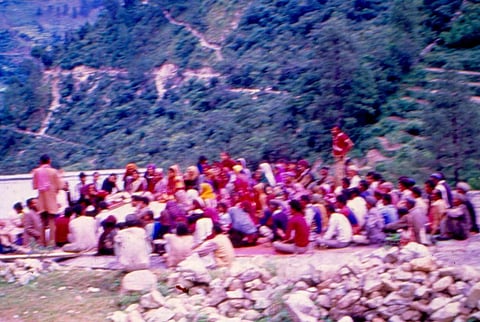

The residents of a village in Uttarakhand’s Chamoli district have had a major victory in a dispute regarding the construction of a dam in the region. An independent panel of the World Bank has agreed to look into environmental damage from the under-construction Vishnugad Pipalkoti Hydro Electric Project (VPHEP) on the Alaknanda River.
The committee has accepted the plea of 83 local communities alleged that the project would destroy the ancient Laxmi Narayan Temple in Haat village. The temple is a cultural resource for the locals and is the source of their livelihood.
The 444-MW VPHEP is being built by the Tehri Hydropower Development Corporation, a partially Centre-owned enterprise. The project is primarily funded by the World Bank and was sanctioned in 2011.
Muck-dumping from the dam threatens the architecture of the temple walls, which is an ancient heritage site, the villagers claimed. The locals claimed to have a sacred bond with Laxmi Narayan Temple, which was allegedly established by Adi Shankaracharya in the 19th century.
A 2022 study by the Archaeological Survey of India was quoted by the villagers in their plea. ASI is an Indian government agency that is responsible for archaeological research and the conservation and preservation of cultural and historical monuments.
The residents also claimed they were being forcefully relaocated from their village. Some locals who refused to accept compensation and move to another place were removed from their homes September 22, 2021, while some were locked up by the police, the petition alleged.
Over 90 families were affected by the project and their livelihood was in danger, too, the petition further said. Around 70 families are getting water for only two hours a day, while 12 get water for around two to five hours a day. Water supply had been promised to them before the project started, the villagers said.
The project has also not taken disasters caused by climate change and extreme weather events into account, the petition further said. A mid-day cloudburst in Kedarnath in 2013 and the Chamoli disaster of 2021 were also ignored, it said.
The World Bank panel July 12, 2022 accepted the villagers’ petition to investigate the project and the plea was registered August 19, 2022.
The panel has considered the request for an enquiry for the third time. The World Bank accepted the first plea July 23, 2012, and a report was submitted July 1, 2014. The second request was rejected by the World Bank.
The inspection panel found the latest petition by the villagers acceptable, said Ramani Kunangyam, chairperson of the inspection panel. “The plea has been recorded August 19, 2022,” he said, adding that villagers have also provided proof of objection.
The identities of the community members requesting the investigation will be kept confidential.
The hydropower project has been targeted to be completed by June 30, 2023 at the cost of $922 million (about Rs 7,36,64,40,000). The old temple site of Haat village has been made a muck dumping site for this project, according to the villagers.
Potential sites for muck dumping sites suggested by the villagers have been ignored, the villagers claimed. They also fear their fresh water source will run out once the dam is built.